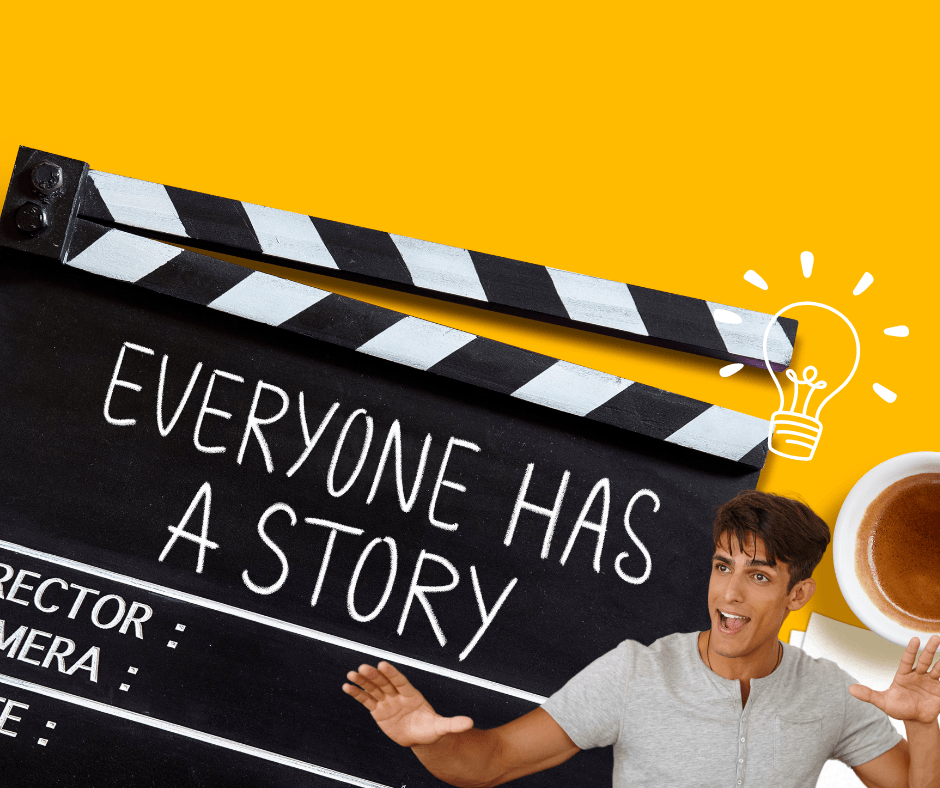Engage, Captivate, and Connect through the Art of Storytelling
Introduction
What is the magical glue that holds an audience captive, inviting them to step into another world? It’s storytelling. Indeed, Content that Connects: The Power of Storytelling in Captivating Your Audience is a critical tool that has been leveraged by mankind from the dawn of civilization. Today, we’ll delve into the wonder and potency of narrative-based content, and how you can use it to enrapture your audience.
The Allure of Storytelling: Why Does It Work?
The Brain on Stories: A Psychological Perspective
Our brains are essentially hardwired for narratives. This is not a baseless statement but a fact supported by neuroscientific research. When we listen to a story, different areas of our brain light up, simulating the experiences and emotions within the narrative. It’s no wonder that well-crafted stories can hold our attention like nothing else, creating content that connects on a profound, visceral level.
Cultural Resonance: Stories that Touch the Heart
The stories that touch us most are the ones that reflect our cultural values and experiences. They resonate with us, making us feel seen and understood. Think of your favorite book, movie, or even brand campaign. Chances are, it has a story that stirred something within you, creating a connection that goes beyond the superficial.
Crafting Content that Connects: Key Elements of Powerful Storytelling
Characterization: Crafting Compelling Protagonists
In every story, the characters are the beating heart. They are the vessels through which the audience vicariously experiences the narrative. Therefore, in creating content that connects, crafting compelling and relatable characters should be a priority.
The Driving Force of Any Story
Conflict is the spice of storytelling. It is what propels the narrative forward, keeps the audience on the edge of their seats, and elicits emotional responses. Without it, a story can quickly become flat and uninteresting.
Resolution: The Satisfying Conclusion
The resolution, or denouement, is the part of the story where the conflict is resolved. It offers closure, satisfying the audience’s desire for a conclusion and leaving them with a sense of fulfillment.
The Power of Storytelling in Marketing: Building Stronger Brands
Emotional Engagement: More Than Just Selling Products
Storytelling in marketing isn’t about selling products or services; it’s about connecting with your audience on an emotional level. It’s about creating narratives that your audience can identify with, leading to deeper brand loyalty and engagement.
Brand Persona: Crafting a Compelling Narrative
Every successful brand has a persona, a character that embodies its values and mission. By crafting a compelling narrative around this persona, brands can create content that connects with their audience on a deeper, more personal level.
Case Studies: Storytelling in Action
Nothing speaks louder than real-life success stories. Case studies are a prime example of storytelling in marketing, showcasing how a product or service has helped real people solve their problems.
The Future of Storytelling: New Avenues and Innovations
Interactive Storytelling: A Two-Way Street
Interactive storytelling is the future. It gives the audience an active role in the narrative, making the experience more engaging and immersive. Be it through gamification, interactive videos, or choose-your-own-adventure narratives, this form of storytelling creates a deeper bond between the brand and its audience.
Virtual and Augmented Reality: Immersive Experiences
Virtual and augmented reality technologies are revolutionizing storytelling. They allow the audience to step into the story, experiencing it firsthand. This level of immersion creates a powerful emotional connection, transforming the audience from passive consumers into active participants.
AI in Storytelling: The Rise of Automated Narratives
Artificial Intelligence is making waves in the world of storytelling. It is being used to generate narratives, adapt stories to individual preferences, and even predict audience responses. Although in its infancy, AI-powered storytelling holds great potential in creating content that connects in unprecedented ways.
Practical Tips for Harnessing the Power of Storytelling
Know Your Audience: Stories That Resonate
The first step in crafting a powerful story is understanding your audience. Know their needs, desires, and challenges. This insight will allow you to create narratives that resonate with them, leading to more meaningful connections.
Show, Don’t Tell: The Power of Vivid Imagery
Show, don’t tell, is a golden rule in storytelling. Instead of telling your audience what’s happening, show it to them. Use vivid imagery and sensory details to paint a picture in their minds, making the narrative more engaging and memorable.
The Art of the Cliffhanger: Keeping Your Audience on the Edge
Cliffhangers are a powerful tool in storytelling. They keep the audience on the edge of their seats, eager to find out what happens next. This not only makes your content more engaging but also encourages your audience to come back for more.
Content that Connects: The Power of Storytelling in Captivating Your Audience
When done right, storytelling can be a potent tool in your content strategy. It has the power to captivate your audience, evoke emotions, and create lasting connections. Remember, it’s not just about telling a story; it’s about telling a story that resonates with your audience, reflects their experiences, and captures their hearts. This is the essence of Content that Connects: The Power of Storytelling in Captivating Your Audience.
FAQs
- Why is storytelling important in content creation?Storytelling is essential in content creation as it makes your content more engaging and memorable. It allows you to connect with your audience on an emotional level, fostering deeper relationships and brand loyalty.
- How can I improve my storytelling skills?Improving your storytelling skills involves practice and understanding your audience. Use vivid imagery, craft compelling characters, and incorporate conflict and resolution. Interactive storytelling, virtual reality, and AI are also innovative avenues to explore.
- What is the role of storytelling in marketing?Storytelling in marketing is about more than selling a product or service. It’s about conveying your brand’s values, mission, and personality. It’s about connecting with your audience emotionally and building stronger brand loyalty.
- Can I use storytelling in my social media content?Absolutely! Social media is a perfect platform for storytelling. You can share narratives through posts, stories, videos, and even interactive content. Remember, the goal is to create content that resonates.
- How can I incorporate storytelling into my blog content?Storytelling can make your blog content much more engaging and memorable. You could share a personal story, present a case study, or even craft a fictional narrative that illustrates your blog’s point. Remember, the goal is to create content that connects and resonates with your audience.
- What is interactive storytelling and how can I use it?Interactive storytelling is a form of storytelling that allows the audience to actively participate in the narrative. You can leverage it through gamification, interactive videos, or choose-your-own-adventure narratives. This type of storytelling creates a more immersive and engaging experience for your audience.
Conclusion
Storytelling is a potent tool for captivating and connecting with your audience. When done right, it can evoke emotions, foster lasting connections, and make your content stand out from the crowd. Whether you’re creating content for a blog, a marketing campaign, or a product, remember this: the power of storytelling lies in creating content that connects on a deep, meaningful level with your audience.
So the next time you sit down to create content, don’t just share information. Instead, tell them a story. Make them feel, dream, and see themselves in your words. This is what it means to have “Content that Connects: The Power of Storytelling in Captivating Your Audience”.

